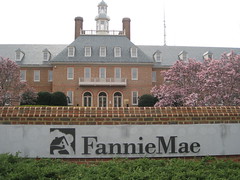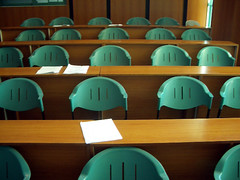Perhaps the most critical way the recession is affecting our lives is the toll it has taken on personal relationships. This week, our look at stories from stations focuses on family relationships that are changing due to the economic climate.
WNET in New York City hosted a question-and-answer session with Al Roker and his wife, Deborah Roberts, about the new Sesame Street special Families Stand Together: Feeling Secure in Tough Times, which addresses how families can talk to their kids when a parent loses their job.
But sometimes things don’t work out — recession or not. At WFCR in Amherst, Mass., Tina Antolini reports on how the recession is slowing down divorce proceedings.
And in May, Minnesota Public Radio told the story of couples who have had to separate temporarily to relocate to work in different areas of the country.
Has the recession had an impact on your family dynamic? How have you explained these changes to your loved ones?
P.S. The videos featured on EconomyStory can be found at the new site: videos.economystory.org, Thanks to our friends at Miro.org for setting this up!

